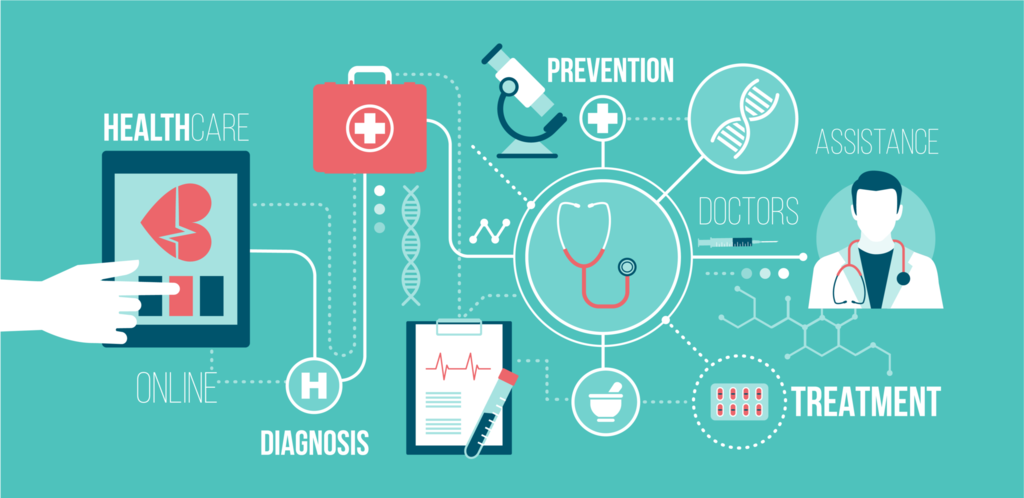CAP's estimate does not include the administrative costs connected with retail sales of medical products, consisting of prescription drugs and durable medical equipment. Even the most inclusive research studies of administrative expenses have not consisted of at least one key piece of the U.S. health care system, particularly, patients. The administrative intricacy of the U.S.
Three-quarters of customers report being confused by medical costs and descriptions of advantages. A Kaiser Household Foundation survey of individuals freshly registered in the medical insurance market found that lots of were not confident in their understanding of the meanings of basic terms and ideas such as "premium," "deductible," or "provider network." Insurance providers and companies invest an estimated $4.8 billion each year to help consumers with low medical insurance literacy, according to the consulting company Accenture.
administrative care spending is indisputably higher than that of other comparable nations, it's unclear how much of the difference is excess and how much of that excess could be trimmed (a health care professional is caring for a patient who is taking zolpidem). The NAM report approximated that excess BIR costs total up to $190 billion$ 245 billion in existing dollarsor approximately half of total BIR expenditures in a year.
Based upon these portions, $248 billion of the overall $496 billion BIR expenses in CAP's upgraded quote are excess administrative costs. Most research studies that have actually attempted to identify excess costs in the American health care system depend on contrasts in between the United States and Canada. In their 2010 review of the literature on the distinction in between the 2 countries' health expenditures, financial experts Alexis Pozen and David M.

and Canadian health costs. They found that 62 percent of the distinction between the two nations was attributable to prices and strength of care, and 38 percent was connected to administrative expenses. Compared to Canada, the United States has 44 percent more administrative personnel, and U.S. physicians commit about half more time on administrative tasks. what is a single payer health care pros and cons?.
Woolhandler and Himmelstein estimate that the United States presently invests $1.1 trillion on healthcare administration, and of that quantity, $504 billion is excess. Woolhandler and Himmelstein rely on studies of physicians' time usage and used doctor earnings data to equate the share of time physicians invest on administrative tasks into financial value; their estimate of excess costs is the distinction between U. what is the affordable health care act.S.
Presuming this distinction is excess requires a presumption that a Canadian-style healthcare system would accomplish Drug Rehab an identical level of administrative expenses in the United States. A different criticism of the initial 2003 Woolhandler and Himmelstein price quotes, as articulated by Henry J. Aaron, an economic expert at the Brookings Organization, is that their approach stopped working to represent distinctions in rates - what is single payer health care.
Some Ideas on What Is Health Care Proxy You Need To Know
As a repercussion, the U.S.-Canada comparison catches not just the differences in the amount of resources devoted to administrationsuch as doctor time or office spacebut also the distinctions in office rates, salaries, and salaries. Taking Woolhandler and Himmelstein's estimate of total administrative costs as an offered and after that making basic changes for rate distinctions, Aaron argues that the 2 scientists overemphasized U.S.
All quotes of administrative expenses are naturally conscious what part of healthcare investing one considers administrative. For instance, time invested taping medical diagnosis or prescription details utilized in billing might also be essential for patient care, enabling medical teams to share up-to-date info or avoid damaging drug interactions. A current research study of an electronic health records (EHR) system estimated that usually, half of a medical care doctor's day is invested on EHR interaction, including billing, coding, purchasing, and interaction.

In a different study, economic expert Julie Sakowski and her fellow researchers reported discovering differing attitudes amongst physicians about whether interaction with electronic medical recordsa subset of EHRrepresented administrative or scientific time. As Sakowski and co-authors wrote, "Some felt they spent additional effort including documents that was needed only for billing.
system, the share of expenses that are attributable to administrative costs varies significantly by payer. The BIR expenses for standard Medicare and Medicaid hover around 2 percent to 5 percent, while those for private insurance coverage has to do with 17 percent. Some public financing experts, consisting of Robert Book, have argued that the low levels of Medicare overhead are misleading.
However, Medicare's per capita administrative expenditures are higher than those in other types of insurance. Even if one compares higher-end price quotes of Medicare administrative Click for source expenses to low-end quotes of costs for private insurance coverage, the gulf in between administrative costs for Medicare and private protection is big. Organisation for Economic Co-operation and Development (OECD) information also show that other nations are able to attain low levels of administrative costs while keeping universal protection across any ages of the population.
And while the OECD's meaning includes administrative expenses to federal government, public insurance funds, and private insurance coverage, but not those borne by health centers, doctors, and other service providers, the plain difference is still informative. In 2016, administration accounted for 8.3 percent of total healthcare expenditures in the United Statesthe biggest share amongst equivalent countries.
For example, administrative costs represent Get more information simply 2.7 percent of total health care expenditures in Canada. OECD information likewise reveal that within a nation, administrative expenses are greater in personal insurance than in government-run programs. Nations that have multipayer systems with stricter rate guideline likewise accomplish much lower administrative costs than the United States.
The Of How Do Patient Care Managers And Support Staff Use The Data Documented In The Health Record?
If the United States might decrease administrative expenses down to Canadian levels, it would conserve 68 percent of current administrative expenses; minimizing to German-level administrative expenses would conserve 42 percent of present administrative expenditures. However, to presume that by merely adapting another nation's healthcare systemwhether it is Canada's single-payer Medicare, Germany's sickness funds, or Switzerland's greatly regulated personal plansthe United States would instantly attain the very same level of administrative expenses might overlook other basic differences in between countries, consisting of the market power of health care service providers, political systems, and attitudes toward health care.
The most affordable possible level of administrative spending for the U.S. healthcare system is not always the optimum level of spending (what is fsa health care). As researchers Robert A. Berenson and Bryan E. Dowd have kept in mind, administrative costs in Medicare may in truth be too low; the program would be more effective with higher investment in efforts to lower costs and improve quality.
Developments such as bundled paymentsthe practice of paying service providers a lump sum for an episode of care such as a knee replacement or childbirth rather than compensating each individual componentinvolve upfront investment in development. Increasing resources to fight scams and abuse would likewise decrease general costs. While the U.S. Department of Health and Person Provider (HHS) boasts that it sees a $5 return on every $1 it puts towards fraud and abuse examinations, that number shows that the government might be underinvesting in those efforts.
Beyond BIR costs, health centers, physician practices, and other healthcare organizations home departments that are complementary to clinical services such as medical libraries, public relations, and accounting. A research study of administrative costs in California discovered that administrative costs represented about one-quarter of physician income and one-fifth of hospital income, and BIR costs accounted for approximately half of administrative expenses for physician and hospital services covered by personal insurance coverage.